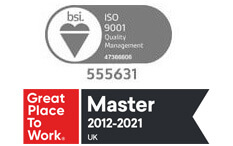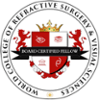How Ageing Affects Your Eyes (And How Laser Eye Surgery Can Help)

There comes a certain point in our lives when all the years behind us seem to suddenly catch up with us – at least on a physical level. Our knees become increasingly stubborn, our hair begins to exhibit never-before-seen shades of grey, and (perhaps most devastatingly) our eyes start to fail us. But how exactly does ageing affect the eyes – and how could Laser Eye Surgery help?
Overcoming the Battle with Ageing
From the moment we’re born, we are essentially fighting against the ravages of time; though most of us hopefully don’t become aware of the war until we’re around 30. Over the next couple of decades, though, it couldn’t be more obvious. While we might not yet be at the stage of stuffing hankies into our sleeves like our parents and grandparents, there are some clear signs that we are on the losing side of some battles.
When it comes to some of these signs, such as the growing prominence of wrinkles and the gradual greying of our once luscious hair, it can be easy to simply accept them with grace. Although let’s face it, such strong social and cultural ideas about ageing as something negative, the burden of staying in line and conforming with expensive skincare regimes and constant visits to the hairdresser can be overwhelming.
Still, even when we accept that ageing is nothing but a simple fact of life, when it comes to our eyesight, most of us will be more than happy to grow old disgracefully.
The Dreaded Onset of Reading Glasses
Ah, reading glasses. They can be as irritating for people who have worn glasses all their lives as they are to newbies. What with the constant need to put them on and take them off depending on the tasks you’re performing, it’s no wonder you’re constantly leaving them upstairs, in the office, or even on the bus!
Unfortunately, this pesky game of hide and seek becomes a necessity once we reach a certain age. But what exactly is it about ageing that condemns us to these irritating visual aids?
Clouding Your Window to the World
Just as it manages to get its hand on every other part of our bodies, the vicious touch of ageing will begin to affect all the structures of the eye. This can have various effects on the way this complex organ works. Eventually, this will lead to a deterioration of virtually every measure of our visual function, from visual acuity to contrast sensitivity. But one of the most noticeable changes we experience is the decline in the sensitivity of the visual field.
Essentially, this means that our eyes will find it increasingly difficult to switch focus from near vision to distance vision. This is the result of weakening muscles in the eye combined with a gradual hardening of the lens. This causes the lens to become less flexible, preventing it from focusing light correctly on the retina. As a result, your vision may become blurry, as the light is focused at a point behind the retina — resulting in out-of-focus vision when looking at objects up close.
Other signs of ageing in the eyes can include the development of glaucoma and macular degeneration, as well as the formation of cataracts and the gradual loss of peripheral vision.
The gradual loss of near vision is known as presbyopia or more literally, ageing eyes. Like myopia (short-sightedness) and hyperopia (long-sightedness), presbyopia is a refractive error.
The effects of ageing on the eyes are inevitable, but that doesn’t mean they aren’t manageable. Some people may opt for reading glasses, artificial lens implants, bifocals, and monovision contact lenses to deal with the effects of presbyopia. However, many people are unaware that Laser Eye Surgery may also be an option for them.
Laser Eye Surgery for Presbyopia
PRESBYOND® Laser Blended Vision is a revolutionary technique developed by Professor Dan Reinstein – our very own expert Laser Eye Surgeon and founder. We have been performing the procedure for over 10 years and have successfully ridden hundreds of patients from their restrictive reading glasses.
On the face of it, PRESBYOND® works in the same way as any other Laser Eye Surgery procedure. However, as opposed to correcting both eyes in the same way – i.e., to correct long distance or short distance – blended vision treats each eye separately.
This means that each eye is corrected in a slightly different way: one eye is corrected mainly to see at a distance and a little up close while the other eye is corrected oppositely. Then it’s all over to brain power which is able to combine the two images into a clear picture across all fields of vision!
Not only is this approach extremely effective, but it is also considered safer and more tolerable than other forms of vision correction, including monovision.
There’s not much we can do to stop the ageing process, but thankfully we don’t have to give up our clear and crisp vision. Find out if you’re a candidate for PRESBYOND® Laser Blended Vision today and hold on to your youthful vision for many more years to come.
Are you interested in how PRESBYOND® Laser Blended Vision could help you ditch the reading glasses? Get in touch or Book a Consultation today to find out if you could be suitable for treatment.


